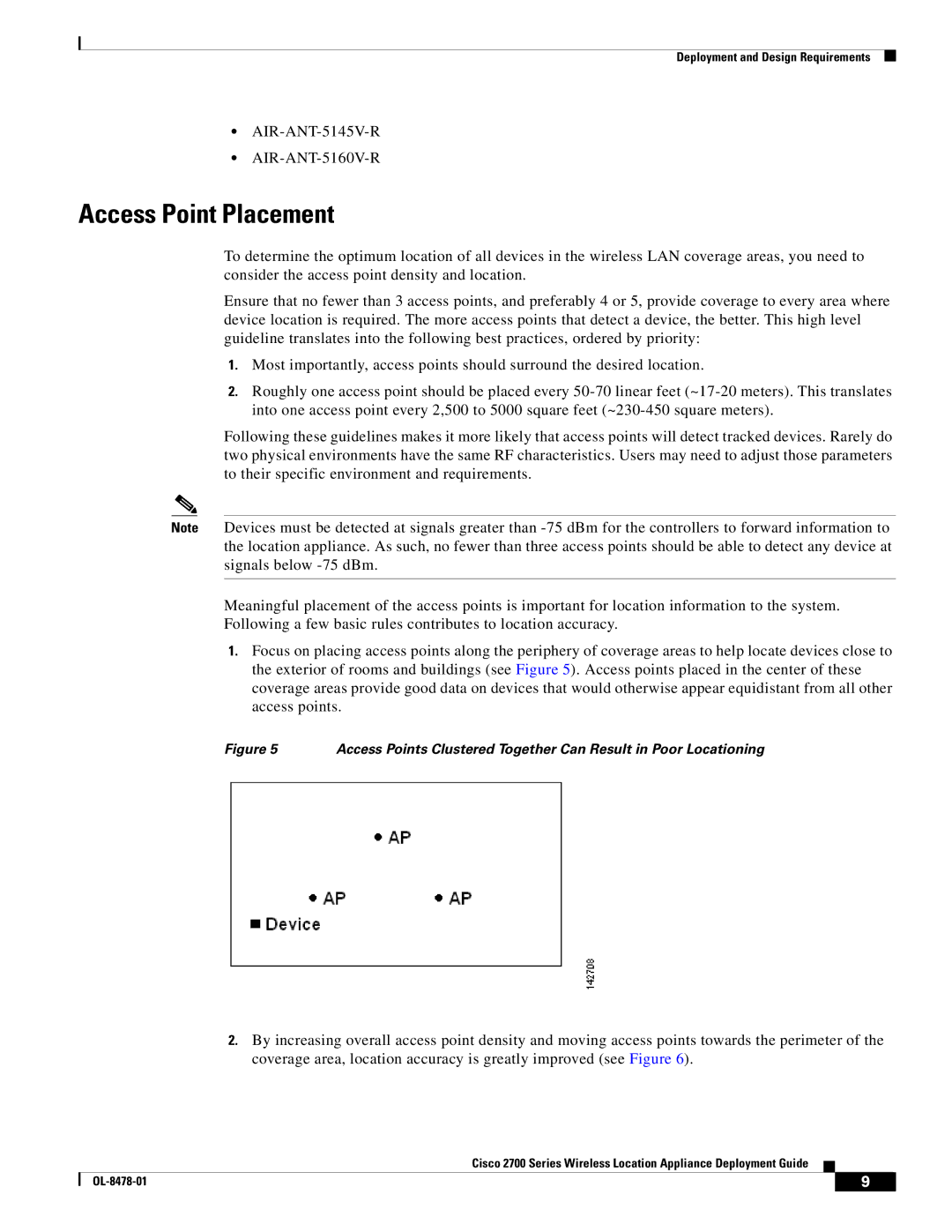
Deployment and Design Requirements
•
•
Access Point Placement
To determine the optimum location of all devices in the wireless LAN coverage areas, you need to consider the access point density and location.
Ensure that no fewer than 3 access points, and preferably 4 or 5, provide coverage to every area where device location is required. The more access points that detect a device, the better. This high level guideline translates into the following best practices, ordered by priority:
1.Most importantly, access points should surround the desired location.
2.Roughly one access point should be placed every
Following these guidelines makes it more likely that access points will detect tracked devices. Rarely do two physical environments have the same RF characteristics. Users may need to adjust those parameters to their specific environment and requirements.
Note Devices must be detected at signals greater than
Meaningful placement of the access points is important for location information to the system. Following a few basic rules contributes to location accuracy.
1.Focus on placing access points along the periphery of coverage areas to help locate devices close to the exterior of rooms and buildings (see Figure 5). Access points placed in the center of these coverage areas provide good data on devices that would otherwise appear equidistant from all other access points.
Figure 5 | Access Points Clustered Together Can Result in Poor Locationing |
2.By increasing overall access point density and moving access points towards the perimeter of the coverage area, location accuracy is greatly improved (see Figure 6).
Cisco 2700 Series Wireless Location Appliance Deployment Guide
| 9 |
| |
|
|
